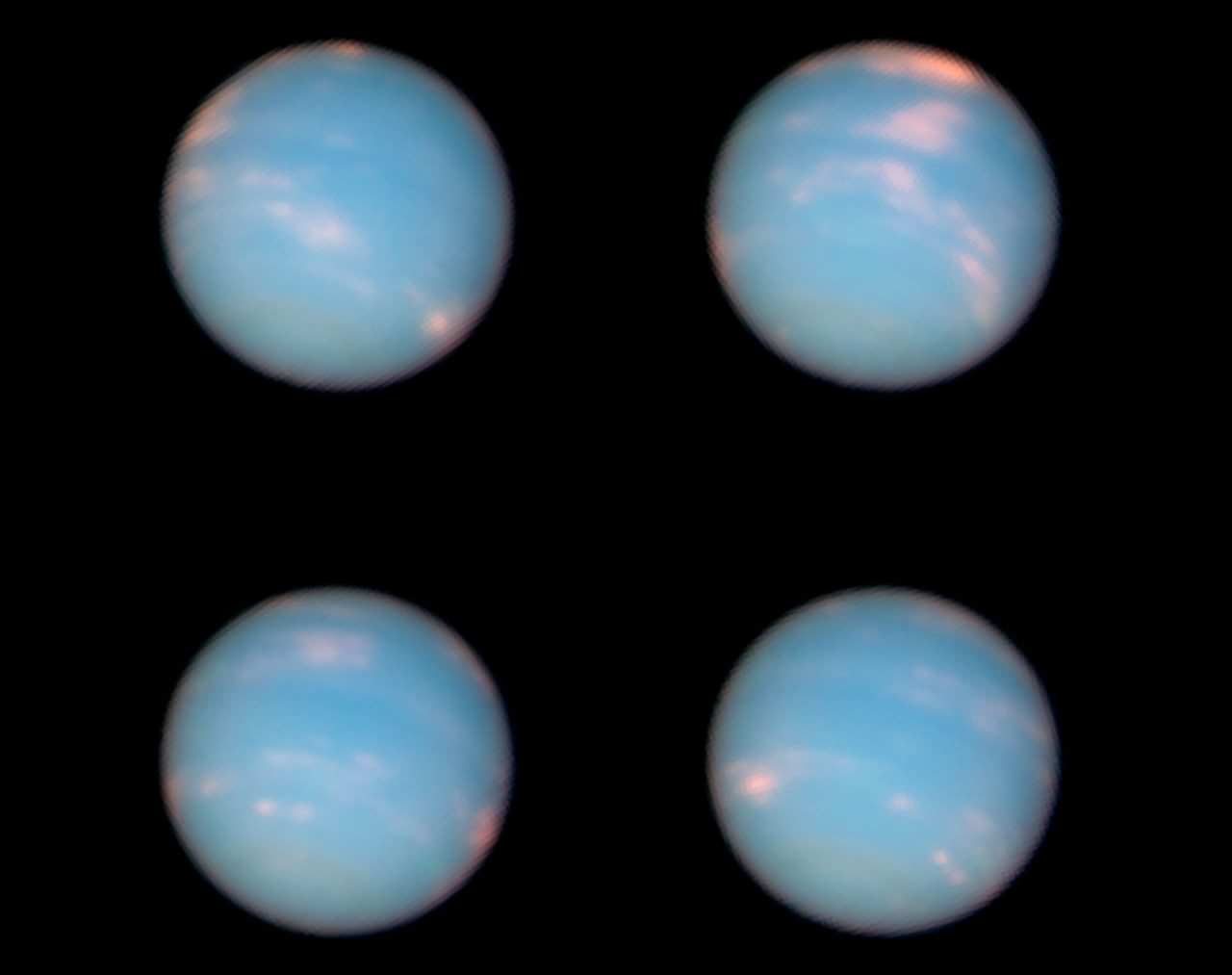[/caption]
To celebrate the first complete orbit of the planet Neptue since its discovery in 1846, the Hubble Space Telescope took a series of images with the Wide Field Camera 3, showing the different faces of the planet as it rotates on its axis. The images were take on June 25-26, 2011.
Even with a telescope as powerful as Hubble, the planet still appears fairly small, but some details are visible. While its blue color is the most distinctive feature, the turbulent conditions in the planet’s atmosphere also show up. Neptune’s thick atmosphere is largely made up of hydrogen and helium and is thought to host the Solar System’s most furious storms, with winds of up to 2000 km/h.
See more about Neptune and these images from ESA’s Hubble page (including access to wallpaper-sized images) and tead more about Neptune’s discovery and anniversary in our article by Tammy Plotner.


I hope we get orbiters out there – and around Uranus – before I die.
You have to put this in some perspective. Neptune and Uranus are examples of local space “geography.” There are other competing space issues, from the structure of the universe, CMB structure, neutrinos, particle astrophysics, galaxies, extra-solar systems, solar physics, the other planets, astro-biology and Earth itself. Putting an orbiter around Neptune will cost and the scientific value or interest has to be weighed against other issues.
LC